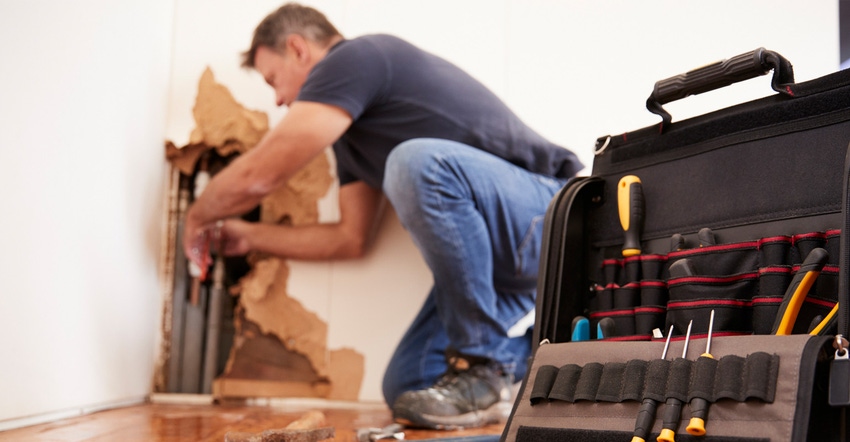
Now that the ice and snow have melted and the windchill is above zero, homeowners are focused on repairing the damage caused by the recent record-breaking deep freeze.
Burst water pipes have wreaked havoc in many homes. Cleaning up and repairing the damage properly is important, said Gina Peek, interim associate dean and Oklahoma State University Extension housing and consumer specialist.
“Water damage from burst pipes is not only unsightly, but also unsanitary. It’s important to control moisture to reduce the risk of mold growth.” Peek said. “Before getting started on repairs, take photos of all of the damage for your insurance company, including damaged sheetrock, furniture and other personal items. It’s always a good idea to have documentation of damage if possible.”
It’s likely others in the area also are dealing with water issues from burst pipes, so there may be delays when contacting damage-restoration companies. In the meantime, Peek suggests removing any moisture that remains. That includes pumping outstanding water and drying waterlogged surfaces.
Throw away any items that have absorbed water and cannot be cleaned or disinfected, including mattresses, carpeting, stuffed animals, cosmetics and food items. Remove all drywall and insulation that has been saturated.
Open windows will help remove moisture-filled air, although renting industrial-size blowers and dehumidifiers will speed up the process. Water from burst pipes is cleaner than a natural disaster such as a flood, but the cleanup process is much the same, she said.
“Be sure to check with your homeowner’s insurance company to see if your policy covers professional drying crews to come in,” she said.
Keep in mind that dealing with water itself is only half the battle. If a surface can’t be dried quickly and thoroughly, it should be removed and discarded. When exposed to a lot of moisture, drywall tends to warp and bulge. Cut out the affected area, replace any water-logged insulation and patch with new drywall.
As for flooring, consider removing vinyl floor coverings and tile to allow the substructures to dry out as well. If the damage is extensive, the subflooring may need to be replaced.
“It’s important to be patient through this process. Depending on the level of water damage, it can take several weeks for a home’s structure to be thoroughly dried,” Peek said. “Only when everything is completely dried should you replace drywall, carpets and other floor coverings. Again, check with your homeowner’s insurance company to determine what professional assistance you’re entitled to.”
More information about cleaning flood-damaged furniture can be found on OSU Extension’s website. The online resources also include guidance to prepare for the next time temperatures drop.
Source: is OSU, which is solely responsible for the information provided and is wholly owned by the source. Informa Business Media and all its subsidiaries are not responsible for any of the content contained in this information asset.
About the Author(s)
You May Also Like






